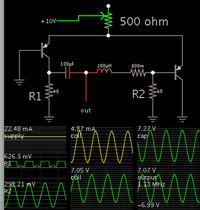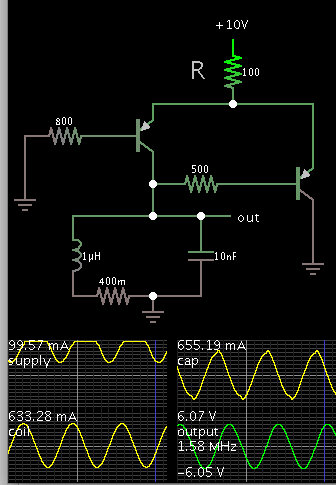neazoi
Advanced Member level 6
Hi, can this oscillator be used with a single ended PSU by making some mods to it?
Or else, is there an easy way to get a symetrical PSU of +/-5V out of a single ended 10V one?
Note that this is an RF circuit so I do not know how well a floating GND would work.
Or else, is there an easy way to get a symetrical PSU of +/-5V out of a single ended 10V one?
Note that this is an RF circuit so I do not know how well a floating GND would work.

